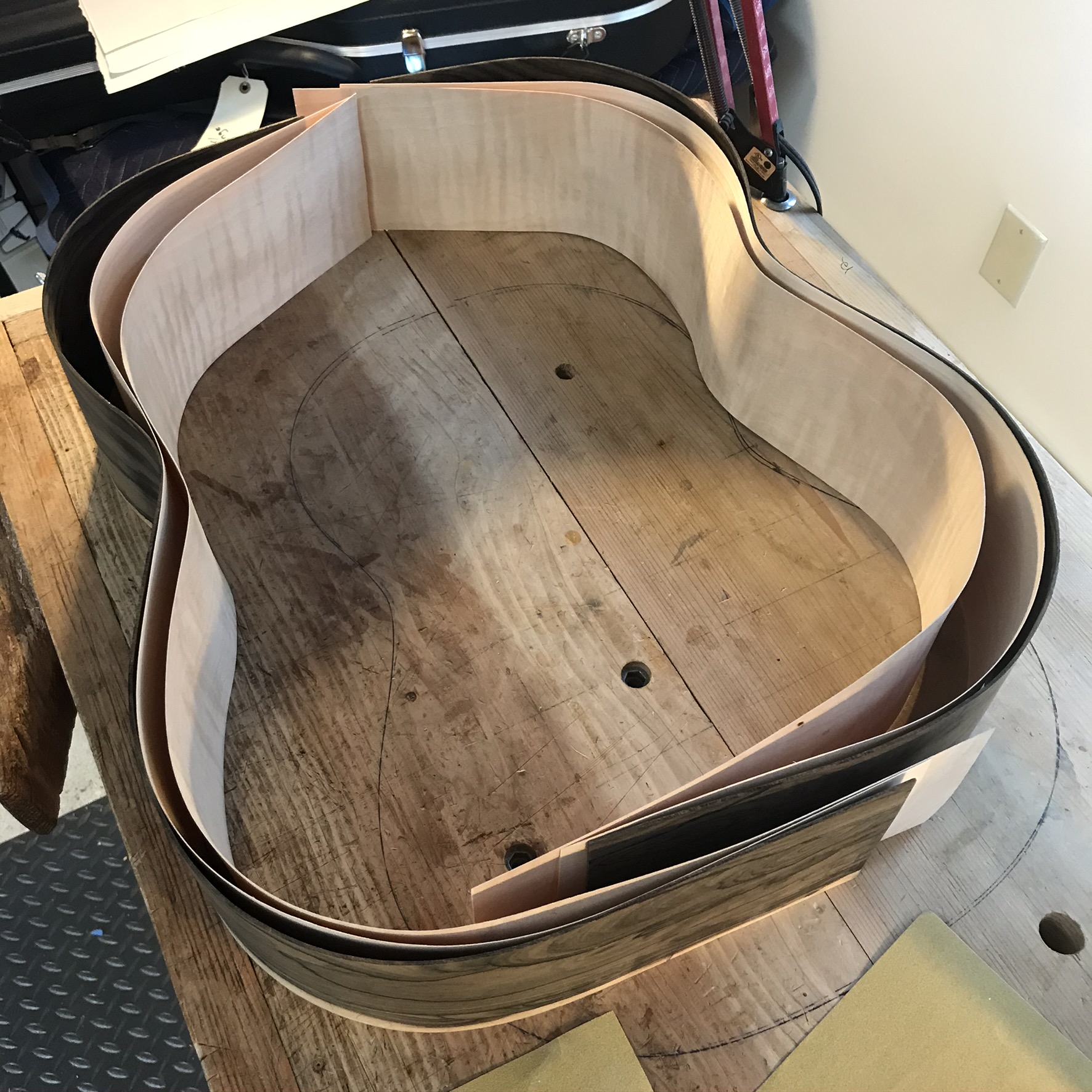Some may not follow this here, but I got a couple of cocobolo billets in the mail yesterday from a guy who had been sitting on them a quarter century (that's easy to follow). I planed one today to plane off the sawmarks (cocobolo is easy planing on the quartered side, but not on the flatsawn side - it's high density, soft between the latewood rings on the quartered face - relatively - and over 3k hardness on the rings). Density is about the same as water or a little heavier.
The billets are quartered so the 8/4 edges are flatsawn.
That gave me another chance to take a picture of the edge of the mex stanley iron, and to my surprise...carbides. Not sure what type, could be anything.
The little dots are carbides. I believe they're round, but protect the steel matrix behind them until they're broken (carbides are fragile and stand up to a beating for a little while, but eventually get cracked, pulverize and leave. I used to thing they would get pulled out, and sometimes I think they do, but not in good steel (there's no voids in the pictures, and the guy who takes edge pictures with an SEM has pictures of the carbides cracking while steel is being sharpened or used).
Too many carbides, and the fine edge of steel isn't that durable (the crack always originates in the carbide and then goes through to the matrix. If the matrix (the "rest of the steel") isn't that thick, it just breaks out.
I modified this iron with a slight roundover with a buff/stropping before using it to prevent the silica particles in the cocobolo (and there are a lot in these two pieces) from bashing the edge. Edge failure is interesting - a small modification of the edge can prevent a much larger failure in size - it seems that failure starts in good steel just at the tip of the apex and then progresses, but if the attack is thwarted so to speak, then nothing happens.
This is extremely high visual magnification, so the worn edge shown is actually in pretty good shape.
What does it look like (this edge had two nicks in it from silica - without slight modification, it would've been battered within 50 feet of planing with dozens of these. This is after something like 400 feet of planing. Nonetheless, one or two will get through unless the modification is significant (which limits clearance).
There's another spot about half as bad as this.
What does it mean for sharpening? the depth of this thing is about 2 thousandths. the width is closer to 5 thousandths in total. It leaves a dull line on work.
In order to remove this kind of damage, you have to sharpen at least to the bottom of this pit - I'd guess most people sharpen half as much or less (so more or less, if working nasty wood like this, protect the edge with a little modification and then hone a bigger burr, and done).
It took 70 seconds to hone all of this out and re-strop the edge - this is the benefit of using an easy-honing iron that's not full of wear resistant bits. Compare the carbides to the size of the damage - wear resistance doesn't do much to make an iron last longer in trouble wood. It's an old wives tale, but those wear resistant irons are often hard and not tough, which has two benefits - the dents don't get in harder material as far, and then when they do, the edge lets go of the damage instead of holding a foil.
Better than HSS or something like that, though, is an iron that's reasonably hard (doesn't have to be that hard) like this one and a little geometric modification, and then just hone out the damage. Standing over the stones two or three times as long to work all of this out is a pain with a supposedly superior iron.




 1772 × 1772
1772 × 1772
































